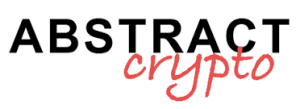Coinbase chooses a revolutionary approach for the security of Base by launching a 5 million dollar bug bounty program on Cantina, aiming at the integrity of smart contracts and on-chain products. The move confirms how the protection of financial assets is now a priority in the blockchain world, while users and investors witness rapid transformations in the dynamics of the sector.
Security on Base: Coinbase’s commitment grows
The new bug bounty program, promoted by Coinbase on Cantina, represents one of the most substantial investments in Web3 security ever. The central objective is to identify and fix critical vulnerabilities in smart contracts and in the main on-chain products of the Base network. The security of these infrastructures proves to be fundamental, especially as Base establishes itself as a reference point for the institutional adoption of blockchain technology.
Un momento storico nella sicurezza onchain.@Coinbase ha lanciato un bug bounty da $5M su Cantina, un nuovo programma che si concentra esclusivamente su tutti i suoi prodotti onchain e sui contratti intelligenti di @base. Stabilisce un nuovo standard per la sicurezza delle organizzazioni Web3 su larga scala. Dettagli di seguito. pic.twitter.com/otO5QVTtH4
— Cantina
(@cantinaxyz) 8 luglio 2025
The initiative is based on an already established review process between Coinbase and Cantina. The focus concerns key components such as Verified Pools, Fault-Proof Audits, Nitro Validator, the WebAuthn modules, and the ERC-6492 validation logic. Web3 security experts are called to assess vulnerabilities whose reporting will be rewarded based on reproducibility and technical impact, with rewards proportional to the severity. In this way, Coinbase strengthens trust in its platform, involving the global community of white hackers.
Base asserts itself between institutions and innovation
Base is quickly establishing itself as the preferred blockchain for institutional adoption. This is demonstrated by the recent initiative of JPMorgan, which chose Base to launch JPMD, its own digital deposit token. The US bank has thus become the first to issue a fully backed and permissioned digital asset on this network, marking a historic milestone for the entire financial sector.
According to Lauren Abendschein, vice president of Coinbase, money transfers on the network are “almost immediate,” thanks to settlement times and costs drastically reduced compared to traditional systems. This attractive model encourages the interest of numerous entities that intend to leverage the advantages of decentralization, while remaining anchored to solid governance guaranteed by the Security Council of Base.
Shopify adopts USDC: a new momentum for Base
In the landscape of financial innovation, Shopify has also chosen Base by integrating payments in USDC through the Commerce Payment protocol. This system makes it possible for millions of merchants to receive stablecoins in 34 countries, with an infrastructure that combines advanced cryptographic mechanisms and very low transaction costs (less than $0.01), as well as settlement times around 200 milliseconds. Additionally, the protocol ensures authorization, transaction security, and automatic management of captures and refunds, making the experience smooth and secure.
Tokenization advances: the role of Base in financial markets
The tokenization of financial instruments finds an ideal environment for development in the Base network. According to Paul Atkins, chairman of the SEC, it represents “the next step” towards a more efficient market, although the regulatory framework is still being defined. The data reveals an impressive growth: in the first half of 2025, the percentage of tokenized assets increased by over 260%. The global market has reached an estimate of about 30 trillion dollars, highlighting how the transition to digital solutions is now irreversible.
Il presidente della SEC Paul Atkins si è unito a @SquawkCNBC questa mattina per discutere della tokenizzazione delle azioni, rendendo i mercati privati più accessibili al pubblico e delle principali priorità per la SEC. https://t.co/ed3zYMk1tO
— U.S. Securities and Exchange Commission (@SECGov) 2 luglio 2025
- Base is proposed as a reference infrastructure for tokenization and institutional transfers.
- Smart contracts facilitate settlement and liquidity processes.
- The blockchain with semi-decentralized governance attracts the attention of banks, companies, and developers.
These trends highlight how the collaboration between regulatory bodies, institutions, and technological players can promote development, efficiency, and transparency in future markets.
New security challenges: bug bounty and incident response
The launch of the bug bounty by Coinbase occurs at a particularly delicate moment for the security of the sector. Recently, Coinbase itself was the victim of a significant data breach with an internal threat that involved about 70,000 users. The hackers gained access to personal data, transaction histories, and internal documents, and demanded a ransom of 20 million dollars. However, passwords and private keys remained secure.
Consequently, the company has responded by strengthening its defenses and introducing a reward fund for informants. Additionally, the structuring of the bug bounty on Cantina represents a decisive step forward in preventing attacks. This context highlights the growing complexity of insider threats and the necessity for all crypto platforms to implement robust strategies against infrastructural vulnerabilities.
Coinbase, Base and the future of blockchain security
The action of Coinbase in support of security through Cantina outlines a scenario in which the protection of digital assets becomes central to the trust of the global market. The growing institutional adoption of Base and the innovations of companies like JPMorgan and Shopify testify to an irresistible push towards the integration of blockchain into mainstream finance.
As rules, threats, and technologies evolve, the bug bounty program fosters a culture of collaborative security that involves experts, developers, and users. The results that will emerge from this initiative may define new standards in the sector, encouraging other players to invest in resilience and infrastructural innovation.
Those who follow these evolutions have the opportunity not only to observe, but also to actively contribute to a radical transformation of financial security in the new digital world.


